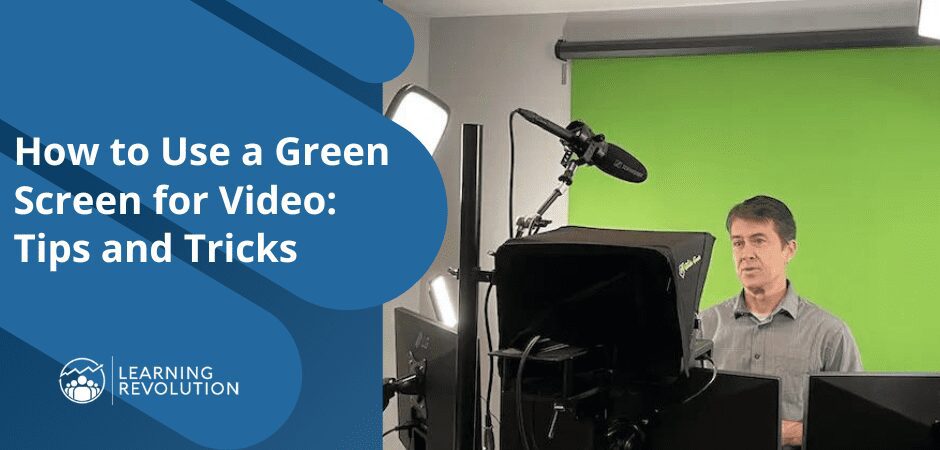

Online video courses are an important part of the edupreneur’s arsenal, not only because of video’s overwhelming popularity, but because it makes a great learning tool. Studies have shown that video courses have better learning outcomes. Video learning improves retention, and learners are 75 percent more likely to choose video-based learning than any other medium.
But just because video is effective doesn’t mean it’s easy to sell. Let’s face it: videos are everywhere.
Today, 85 percent of U.S. internet users watch videos online, spending on average one-third of all their browsing time on streaming sites, vlogs, and social media videos. YouTube alone has over 1 billion viewers—a third of the entire global online population.
And, Massive Open Online Courses (MOOCs) – which are almost always video-driven – have grown at a staggering rate. As of 2017, there were almost 10,000 courses available online on the biggest platforms, plus thousands more being hosted on smaller or independent sites. Around 23 million new students enrolled in 2017, bringing the total number of registered global learners to 81 million, and growing.
Video is a powerful medium, but because of its massive popularity, selling your own online video course can be a challenge. There are so many hosting sites out there, and so much competition already, that making an impact on the marketplace can be difficult.
So, below you’ll find my advice on how to create and sell video courses in order to reap the most success.
Related Post: Uscreen: A Beginner’s Guide to Monetizing Your Online Videos
Understand your niche
Before creating your first video or picking a platform, you need to validate your course idea and understand your learners. Whether you’ve been teaching in your field for years, or you’ve identified a new opportunity to explore, it’s important to know what competition is out there and whether your topic is one people are likely to pay for.
Start by exploring your subject on existing e-learning platforms. Review not only the number of competitors in your field, but drill into the content of their courses, pricing, audience, and more. The more you can learn about what other edupreneurs are doing, the better you can tailor your material to appeal to learners.
Look for a Unique Selling Proposition (USP). What can you teach that isn’t already available? What unique perspective can you bring to the material? What demand is currently unfilled?
Conduct targeted research among prospective learners and listen in closely to social media conversations in your field. Many learners will take to social media to complain about something they want but have not been able to find. Smart edupreneurs follow those conversations to identify gaps in the market.
Once you’ve decided on a subject for your video classes, tailor your course to your target audience from the pricing and platform up. If you’re teaching a subject aimed at teens and young adults, for example, a self-hosted course with a four-figure price tag isn’t going to perform effectively. Likewise, you’ll be selling yourself short if you charge a minimal fee on an online learning platform for a niche course aimed at C-suite executives.
Pick a business model
Although your overall course fees will depend in large part on what your target learners can sustain, there are still variables to consider when it comes to pricing both your individual classes and overall course.
Ad revenue splitting provides free access to your learners in exchange for a small time consideration (generally ad revenue is generated when an ad is clicked, or when it has been watched for 30 seconds or more). The downside to this kind of revenue generation is the low price per view and uncertain income. A video on YouTube could have zero views or a billion, thus there’s no way of accurately predicting what the revenue will be from any particular video, especially for edupreneurs just starting on a platform and still building their audience.
However, if you are producing e-learning courses in areas that have a broad appeal, especially to a younger audience that doesn’t control their purchases or has low disposable income, ad revenue can still generate large and sustainable profits.
Subscription models are also popular for e-learning courses. With a subscription, a learner purchases access to a course by paying a small recurring amount. Subscriptions work best when you are producing new video classes on a regular basis, or have a large backlist of existing e-learning content. This model is a good middle-ground for edupreneurs looking for a steady, predictable income, and appeals to learners who want to make a long-term commitment without paying large upfront fees.
For edupreneurs targeting executive and advanced learners, a one-time fee model often works best. While the one-off price for an e-learning course can be as high or low as you choose, chances are you aren’t charging enough. E-learning, as with any online industry, can be a race to the bottom when it comes to rates, but if you want to create and monetize a successful online course, aim your prices high.
When you’re choosing your business model and pricing level, you need to find a balance between your market size, learners’ circumstances, your fair compensation, and the ultimate benefit to the learner. If they finish your course with knowledge that will improve their career prospects, price according to the value you have added and their potential gains from the information you imparted.
And remember, people spend thousands of dollars each year on their hobbies, so even just-for-fun courses shouldn’t be devalued.
Choose the right online video course platform
Once you have your market and business model identified, it’s time to find the right platform. Different platforms offer different advantages (and disadvantages). When considering your choice, keep in mind how you intend to monetize your online learning course.
Video on Demand (VOD) platforms
The simplest and most flexible way to monetize your online course is to sell each video through an on demand service such as Vimeo or Amazon Prime Video Direct. Like conventional video sales, these platforms work by distributing your videos to the paying public, who can choose from a variety of ways to purchase and view your content. As the creator, you can set a fixed price for individual videos and full collections, or collect revenue through subscriptions, rental models, or ad and other revenue splitting.
The advantage to this model comes in the control you have as a content creator. Unlike some of the other choices below, you can diversify your learners’ options for accessing your videos, meaning your course will have wider reach and appeal than using a fixed model of revenue generation. By hosting with an established video provider such as Vimeo or Amazon, you also get access to their large user base. Amazon Prime surpassed 100 million users in January 2019, and Vimeo has 170 million regular users viewing 715 million videos each month.
Even if you don’t think your target learners will be looking for e-learning videos through large video on demand sites, there are smaller VOD services such as Uscreen to consider. These provide “over the top” or OTT film and TV services delivered through apps to smart devices such as phones and TVs. Uscreen has over 1 million subscribers, and provides a convenient way for you to deliver your course directly to your learners’ devices.


Ad revenue splitting
Hosting ads is a common way of monetizing video online, and is a popular way a lot of video content creators earn revenue. YouTube is the most obvious example of a video hosting platform with ad monetization. The advantage to this model is it costs the viewer nothing except the time it takes them to watch the ad, meaning there’s no financial barrier between your learners and your content. The downside to monetizing through ads is the low earning potential. In 2013, YouTube’s average Cost Per Thousand views (CPM) was $7.60, which is split 45/55 with Google, meaning a content creator can earn an average of $4.18 for every thousand views their video gets. (There are, however, plenty of other ways to monetize your videos on YouTube.)
This can still be profitable to edupreneurs who are creating e-learning videos in popular fields. Veritasium’s science learning channel has 5.4 million subscribers and over 520 million views across 267 videos, giving them an average income potential of around $2.17 million. Math channel Numberphile is another good example of ad revenue success, with 2.9 million subscribers and over 400 million views for a $1.67 million average revenue potential.
Those examples are outliers, however. Very few edupreneurs come close to that level of success, and few e-learning topics have broad enough appeal to attract those kind of viewing figures. If you’re planning an online learning course in a niche or less accessible subject, the ad revenue model probably isn’t for you.
Online learning platforms
Using video on demand or YouTube can work just fine if your content is video-only. If, however, you want to add in other capabilities, like text pages, quizzing, the ability to download documents, or facilitated discussion, then a true online course platform would be a better choice for hosting and selling your videos.
I’ve already covered online course platforms extensively in other posts, so I won’t go into great detail here other than to say that there are four major options to consider.
- Standalone Platforms – These include popular options like like Thinkific, Teachable, and as the name suggests, they are platforms separate from your own Web site. They usually have the advantage of being relatively simple to use while offering the full range of features you need to turn your videos into full-blown courses and sell them.
- All-In-One Platforms – These include platforms like Kajabi and Podia. Unlike the standalone platforms, you can use these for your whole Web and marketing presence – and they offer all of the features you need for creating and selling platforms.
- Plug-ins and Themes – If you use WordPress, you can used plug-ins and themes to sell training videos online from your own Web site. There are a ton of options in this category and most of them require a pretty strong level of technical expertise for working in WordPress. If video courses are your main focus, the main one I would recommend for most edupreneurs is MemberPress.
- Marketplace Platforms – These include options like Udemy and Skillshare. The main advantage they offer is that they already have an established marketplace for online courses, so you get to publish your videos in a place where people are actively seeking online education. Sounds great, but keep in mind that you usually have very little control over your pricing in these platforms, you don’t get access to your user contact information, and because you will still have to put effort into marketing to stand out from other sellers in the marketplace. In general, I tell people to think very hard before considering this model.
Overall, before choosing the right course platform for you, it’s important to consider the size of your target audience, as well as your future learners’ budgets and online behaviors, in conjunction with your technical abilities and budget. Before you decide on a host, be sure to review the major online learning platforms to find the best fit for you.
Create your videos
Once you’ve chosen a hosting platform, you need to make your e-learning videos. The platform’s requirements can have an impact on the technical aspects of creating the right video, so you may have to consider your filming equipment and editing capabilities when choosing how to host your online course. To begin, most edupreneurs will need a basic home studio setup, and have a general understanding of how to produce an e-learning video.
If you’re just getting started creating video learning courses, you don’t need to spend thousands on fancy equipment. My guide to creating a home studio will talk you through filming your first e-learning class using your smartphone or an inexpensive camera. Depending on your subject, you can also use screen recording software to film your desktop and teach without appearing on camera at all.
Increasingly, edupreneurs are using livestreaming to get started with video learning, broadcasting their lessons through platforms like Restream and StreamYard that allow you to multistream to many different social media platforms and other sites at once. Livestreams are the fastest and easiest way to distribute video classes as the audience will have low requirements for technical expertise.
They can be a great option for piloting your material (which I always recommend), but keep in mind that a livestream doesn’t always make a good evergreen e-learning video, especially if the quality of the recording isn’t great. You will most likely want to create a more scripted, higher quality video after using livestreaming to test your material.


Promote your online video course
Self-promotion is many an edupreneur’s stumbling block, but there is no avoiding it if you want to make sales. When creating an online video course, it isn’t enough simply to publish the videos.
Keep in mind that if you have done good market validation work and have piloted your materials, you have already taken some steps toward promotion. Also keep in mind that, even if marketing is your biggest fear, you probably already know how to market your course better than you think.
So, take heart, and focus on the three key aspects of promotion: awareness, attraction, and conversion.
Awareness
This one is probably obvious: if no one knows about you or your online video course, no one is going to buy.
Fortunately, between the experience you already have and the work you’ve done validate your course idea, you should already have a good idea of where the prospective customers for your course are hanging out. As early on as possible – ideally well before you even start creating your course – you need to start getting in front of these people. The idea is not to “pitch” people on your course, but simply to make them aware of the value and expertise you offer.
Some key ways to do this are to:
Be a guest contributor on podcasts and blogs that are popular among your target audience. In just about any niche, there are dozens, if not hundreds or thousands of blogs and podcasts that reach at least some of your potential audience. As I’ve written before, I’m a fan of finding blogs and podcasts that are just a little below the top tier. The people running these are almost always hungry for relevant content. You just need to take the time to understand their content focus and reach out in a non-spammy way to offer content that will truly be useful to them.
Speak at events your audience attends. There’s a trade or professional association for just about anything, which means there are opportunities for you to present at the meetings of these organizations or be a presenter on their Webinars. (More than 90 percent of them offer Webinars.) If you need help finding these groups, check out the AssociationExecs database there are also plenty of opportunities with local chambers of commerce and other business groups. Do some searching, and you will almost certainly come up with places where you can get in front of a room full of prospects.
Follow, connect, and share on social media. Social listening can be a powerful part of validating your market as well as figuring where it makes sense to follow people and – by sharing relevant resources – attracting a following. Figure out the one or two channels where your prospective audience seems to be active and become an active participant on those channels.
Advertise on channels that attract your audience. Finally – and particularly once you have the best social media channels identified – you can invest in advertising. Keep in mind that even before you have a product, you can “boost” your posts on most major social media channels to attract and engage followers. You can also advertise on search engines to get in front of people searching on topics related to your course. Usually, though, you aren’t going to want to invest significantly in advertising until you have a way to actually capture leads – which leads us to the next factor in promotion.
Attraction
Awareness is all well and good, but to move your prospects towards becoming customers, you have to move them beyond awareness and actually attract them to you. To do that, you need to not only showcase your expertise, but also offer something of value that will make them want to find out more.
Eventually, that “something of value” will be your online video course, but before you ask a prospect to pay for something like a course, you usually want to offer other forms of value first.
These might include:
Blog, video, and/or audio content that solves key problems for your prospects. One of the steps every edupreneur should take as early on as possible is to start creating a body of work that showcases your expertise. Personally, I’ve always found the benefits of blogging to be huge, but I’ve also had a lot of success with podcasting. Choose whichever medium works best for you, but creating useful content that will attract your prospects to you
Free eBooks, reports, checklists, and other “lead magnets.” Attracting people to your freely available content is a critical step, but ideally you want to know who these people are and how to contact them when you have something to sell. For that, you need a reason for them to hand over an e-mail address and a lead magnet accomplishes this purpose. While lead magnets are nowhere near as effective as they used to be, if you offer valuable, useful content that truly addresses a key issue for your audience, you can still get a significant percentage of visitors to your site to provide contact information in exchange for access to your content. These people become well-qualified leads for your online video course.
You don’t even have to have a Web site or course platform up and running to start offering a lead magnet. You can use a platform like Leadpages, for example, to set up a page where prospects can sign up for a lead magnet. Leadpages even has site builder capabilities to help you put together Web sites specifically for driving leads and sales.
Keep in mind that Awareness and Attraction support each other, primarily as a result of search engines and social sharing. It won’t happen overnight, but when you create valuable content – particularly if you are careful to use language that your audience is likely to use – search engines will find it and at least some of the people who access your content will share it. So, as you are creating content, definitely keep search engine optimization and shareability in mind.
Conversion
We’ve already touched on one type of conversion: getting people to hand over an e-mail address. Enticing them to follow you on social media is another type, but the other type, of course, is to make the sale – to convert your prospects into actual paying customers for your online video course.
It’s relatively rare an actual sale to happen the first time a prospect finds you – that’s why continuing to raise awareness and attract people to a body of content are so important. When you do go for the sale, it’s important to have a landing page – aka a sales page – that makes the likelihood of a purchase as high as possible.
I discuss the critical elements of an effective landing page in more detail here. Keep in mind that where you host your course will have a big impact on how much control you have over your landing pages. You are going to have much less control if you host with a video-on-demand or marketplace site, much more control with most standalone online course platforms, and nearly complete control if you host through your own Web site with an all-in-one platform or theme/plug-in.
Analyze your data and keep improving
Of course, your work isn’t done – nor does the opportunity end – when your e-learning video course has been published or even when you make your first sales.
In order to maximize your course’s potential, consistent monitoring will help you attract new learners. Pay attention to feedback on your video course, including reviews and ratings and more subtle feedback such as course drop-off points and other metrics that indicate where your classes are failing to deliver. Tweaking and improving the course based on learner feedback will help you improve course retention rates and capitalize on success.
Keep an eye, too, on what’s working when it comes to awareness, attraction, and conversion. Google Analytics will help you do this as will the reporting tools in whichever type of platform you choose to use. By tracking this data, you inevitably find new ideas as well as ideas for improving on what’s already working.
The great thing about success is that it breeds more success. (For a really interesting exploration of this point, I highly recommend The Formula by Albert-László Barabási.) Follow the steps outlined here and you’ll start a virtuous cycle that will stand you out in the market for online video courses.
See Also:
- Uscreen: A Beginner’s Guide to Monetizing Your Online Videos
- How to Create a Simple Home Video Studio for Online Courses
- How to Sell Courses Online
Table of Contents




